Books offer a simple way to gain knowledge and improve understanding across many topics. By reading thoughtful and well-written books, a person can acquire new ideas and facts that enable them to think more clearly and speak with confidence.
This list highlights ten books that offer valuable insights and information, making conversations more engaging and informed. These selections are meant to boost general knowledge and sharpen thinking, helping anyone engage in a wide range of discussions.
Let’s get to it.
Sapiens by Yuval Noah Harari
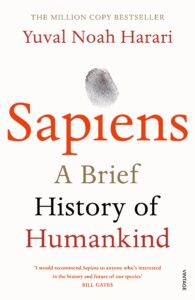
Sapiens offers a clear and engaging look at the history of humans. Harari explores how Homo sapiens evolved from simple creatures into the dominant species on Earth. The book focuses on key developments, like the ability to create shared stories and myths.
Harari explains how concepts like money, religion, and kingdoms helped shape human societies. He presents complex ideas in a way that is easy to follow, making history interesting without being too detailed or dry.
The book covers a wide range of topics, from biology and anthropology to culture and economics. It helps readers understand the big changes that have shaped human life over thousands of years.
Sapiens is useful for people who want to have smarter conversations about history, society, and human nature. It provides insights that connect the past with the present and future clearly and logically.
Thinking, Fast and Slow by Daniel Kahneman

Daniel Kahneman’s book, Thinking, Fast and Slow, explains how people use two different ways of thinking. The first is fast, automatic, and emotional. It helps us make quick decisions without much effort. This is called System 1.
The second system is slower and more logical. It requires more focus and effort. System 2 is used when we deliberate or solve difficult problems.
Kahneman shows that both systems influence how we think, often leading to mistakes or biases. His work is based on decades of research in psychology and economics.
The book helps readers understand why they sometimes make faulty choices. It encourages greater awareness of these mental shortcuts.
By learning about these thinking systems, readers can improve their decision-making. This knowledge is useful in everyday conversations and complex situations alike.
The Art of Thinking Clearly by Rolf Dobelli
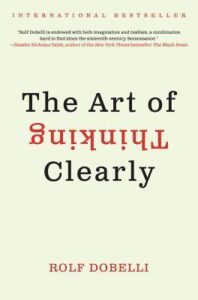
Rolf Dobelli’s The Art of Thinking Clearly explores common mistakes people make when they think. The book explains many cognitive biases that affect everyday decisions without us realizing it. These biases can lead to poor choices in work, finances, and personal life.
Dobelli uses clear examples to show how emotions and mental shortcuts influence our judgment. He points out that most errors in thinking are predictable, not random. By recognizing these patterns, readers can improve their reasoning and make smarter choices.
The book is written in simple language and offers practical advice. It helps readers spot when their thinking might be clouded by bias. This makes it useful for anyone who wants to avoid common traps in decision-making and think more clearly in conversations.
How to Win Friends and Influence People by Dale Carnegie
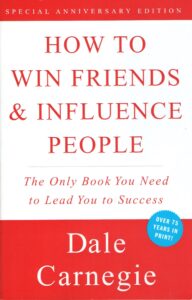
How to Win Friends and Influence People is a classic book on improving communication and relationships. Written by Dale Carnegie, it offers practical advice on how to connect with others in both personal and professional settings.
The book teaches simple techniques like how to make people feel important, listen carefully, and influence others without causing resentment. It breaks down social skills into easy steps that anyone can use.
First published in 1936, it remains popular because its lessons help people handle conversations more effectively. Carnegie’s approach focuses on kindness and respect, which can lead to better outcomes in many situations.
Readers learn ways to make others like them, persuade others gently, and create positive impressions. The book is straightforward and designed to build confidence in social interactions.
It is valuable for anyone wanting to improve their ability to communicate clearly and thoughtfully. The advice in the book is based on real-life examples and proven principles. This makes it a useful tool for smarter, more meaningful conversations.
Guns, Germs, and Steel by Jared Diamond

Guns, Germs, and Steel explores why some human societies advanced faster than others. Jared Diamond argues that geography and environment played a key role in shaping history. Societies with access to fertile land, domesticable plants, and animals developed farming earlier.
This early start gave them advantages, such as food surpluses, which allowed larger populations. These societies created complex governments, technology, and weapons. They also faced fewer deadly diseases, which helped them survive and expand.
Diamond connects these factors to explain why some groups conquered others. His work shows that history is not just about people’s abilities but often about the conditions around them. The book offers a broad view of human history that challenges common ideas about cultural differences.
The Righteous Mind by Jonathan Haidt
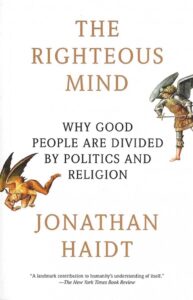
The Righteous Mind explores why people have different moral views, especially in politics and religion. Jonathan Haidt shows how moral thinking is often quick and intuitive, not just a product of careful reasoning. This helps explain why people can strongly disagree yet all believe they are right.
Haidt uses research from psychology, biology, and social science to explain how moral beliefs shape human behavior. He argues that understanding these differences can improve conversations and reduce conflicts. The book also highlights how cooperation is possible despite deep moral divides.
By reading The Righteous Mind, readers gain insight into why it is hard to change others’ opinions. It teaches the importance of empathy and seeing issues from different moral perspectives. This can help people talk more effectively across political and cultural lines.
Quiet by Susan Cain
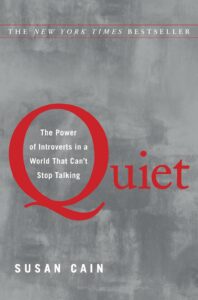
Quiet by Susan Cain explores the power of introverts in a world that often favors extroversion. The book is based on research in science and humanities, showing that introversion is a natural and common personality trait.
Cain explains how society tends to misunderstand and undervalue introverts. She offers insights into how introverts think, reflect, and prefer solitude to recharge.
The book uses real stories and research to highlight the unique strengths of introverts. It also provides tools to help introverts better understand themselves and succeed in an extrovert-centered environment.
Quiet helps readers see that introversion is not a weakness but a different way of interacting with the world. It encourages respect for diverse personalities in work, school, and everyday life.
Factfulness by Hans Rosling
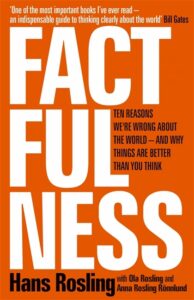
Factfulness challenges common beliefs about the world by using clear data. Hans Rosling, along with Anna and Ola Rosling, shows how many people misunderstand global trends. The book explains why people often have a negative view of the world, even when facts show progress.
The authors describe ten instincts that distort our thinking. These instincts cause people to focus on dramatic stories rather than balanced facts. By recognizing these instincts, readers can gain a clearer and more accurate view of the world.
Factfulness encourages thinking based on real evidence instead of assumptions. It also shows how the world has improved in areas like health, education, and poverty. This approach helps readers have smarter, more fact-based conversations about current issues.
Predictably Irrational by Dan Ariely

Dan Ariely explores how people often make decisions that seem logical but are actually flawed. He shows that human behavior is influenced by hidden forces that affect choices without us realizing it. This book challenges the idea that people always act in their best interest.
Ariely uses examples from psychology and economics to explain why people behave irrationally. The book reveals common decision-making errors, such as overvaluing free things or being influenced by social norms. These insights help readers understand their own and others’ behaviors better.
The book is based on experiments that test real-life situations. It offers practical lessons on how to avoid common thinking traps. This makes it useful for conversations about human nature, business, and personal decisions.
By reading it, people can gain a clearer view of how decisions are made. This can lead to smarter, more thoughtful discussions in everyday life and work.
The Signal and the Noise by Nate Silver
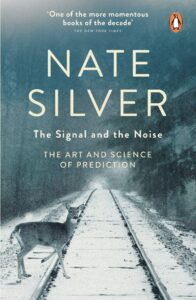
The Signal and the Noise explores why many predictions fail, while some succeed. Nate Silver, known for his accurate forecast of the 2012 US election, looks at how people can improve their ability to predict events.
Silver studies forecasters from different fields like weather, sports, politics, and economics. He finds that the best forecasters understand the importance of probability and uncertainty.
The book explains how to separate meaningful information—the signal—from irrelevant details—the noise. Silver shows that this skill is vital in making smart decisions in uncertain situations.
He also warns about the limits of big data and overconfidence. His approach balances careful analysis with humility about what we can truly know.
The Signal and the Noise helps readers think more clearly about predictions. It teaches how better forecasting can improve conversations on many topics, from politics to finance.
How These Books Expand Conversational Intelligence
These books help readers improve the way they understand others and think through ideas. They focus on key skills like seeing different viewpoints and reasoning clearly. This makes conversations more meaningful and effective.
Understanding Diverse Perspectives
The books encourage readers to step into other people’s shoes. They present stories and ideas from many cultures, backgrounds, and fields. This helps readers recognize why people think or feel differently.
By learning about diverse perspectives, readers gain empathy and reduce misunderstandings. They become better at listening without judgment and responding thoughtfully. This builds trust and opens up more honest communication.
Many of these books include real-life examples and research showing how diverse views improve problem-solving and creativity. The knowledge readers get from these insights helps them handle difficult conversations with respect and calm.
Building Analytical Thinking
Analytical thinking lets readers break down complex ideas into clear parts during a conversation. These books teach techniques like questioning assumptions and spotting biases.
With stronger analytical skills, readers can weigh evidence and identify strong arguments. This leads to deeper understanding and clearer communication. They do not just share opinions, but explain their thoughts logically.
Several books offer practical exercises for developing critical thinking habits. Over time, readers learn to stay focused, avoid distractions, and address important points directly. This sharpens their reasoning and makes discussions more productive.
Practical Tips for Applying Insights From These Books
Applying what is learned from these books takes focus and practice. It involves using new ideas in real conversations and sharpening listening and response skills. Doing this helps turn knowledge into useful communication tools.
Implementing New Ideas in Conversations
To use insights effectively, readers should start by selecting one or two key ideas from a book. Trying to apply too many at once can be confusing. They should introduce these ideas naturally in everyday talks, such as sharing a helpful fact or different viewpoint.
Taking notes on where and how these ideas fit is useful. This practice helps track what works and what doesn’t. They can even prepare examples or questions ahead to make the conversation more engaging.
Being open to others’ views and avoiding overly technical language when possible makes the ideas easier for everyone to understand.
Improving Listening and Response Skills
Good conversations depend on strong listening. Readers should focus on truly hearing what the other person says, not just waiting to talk. This means paying attention to tone, body language, and emotions as well as words.
Asking clarifying questions often shows interest and helps avoid misunderstandings. Reflecting on what was said before responding also improves the quality of replies.
Using techniques like summarizing key points aloud or paraphrasing can confirm understanding. It makes conversations clearer and more productive.
Practicing these skills regularly can build confidence and help apply knowledge more naturally.



No comments yet. Be the first!